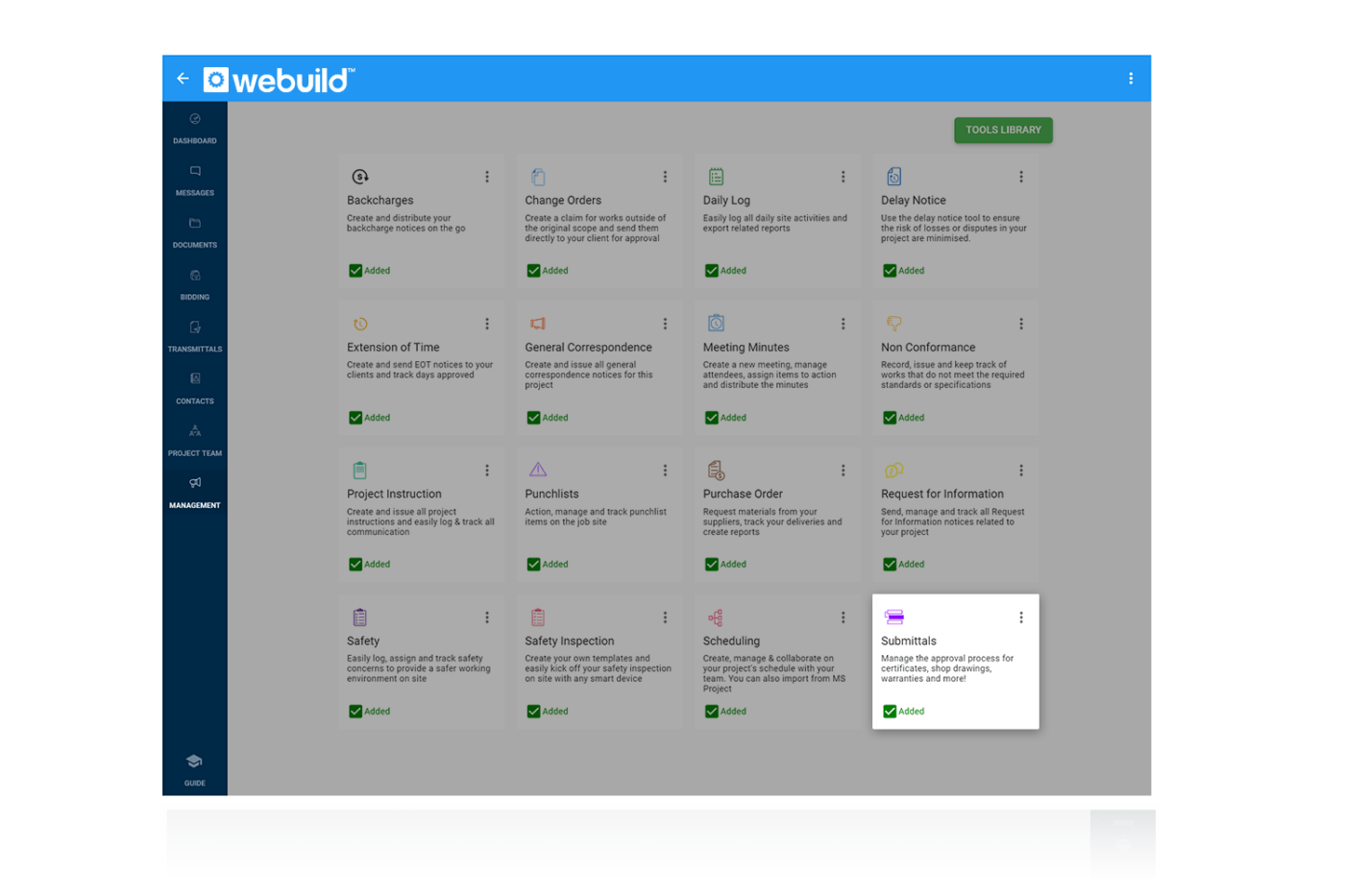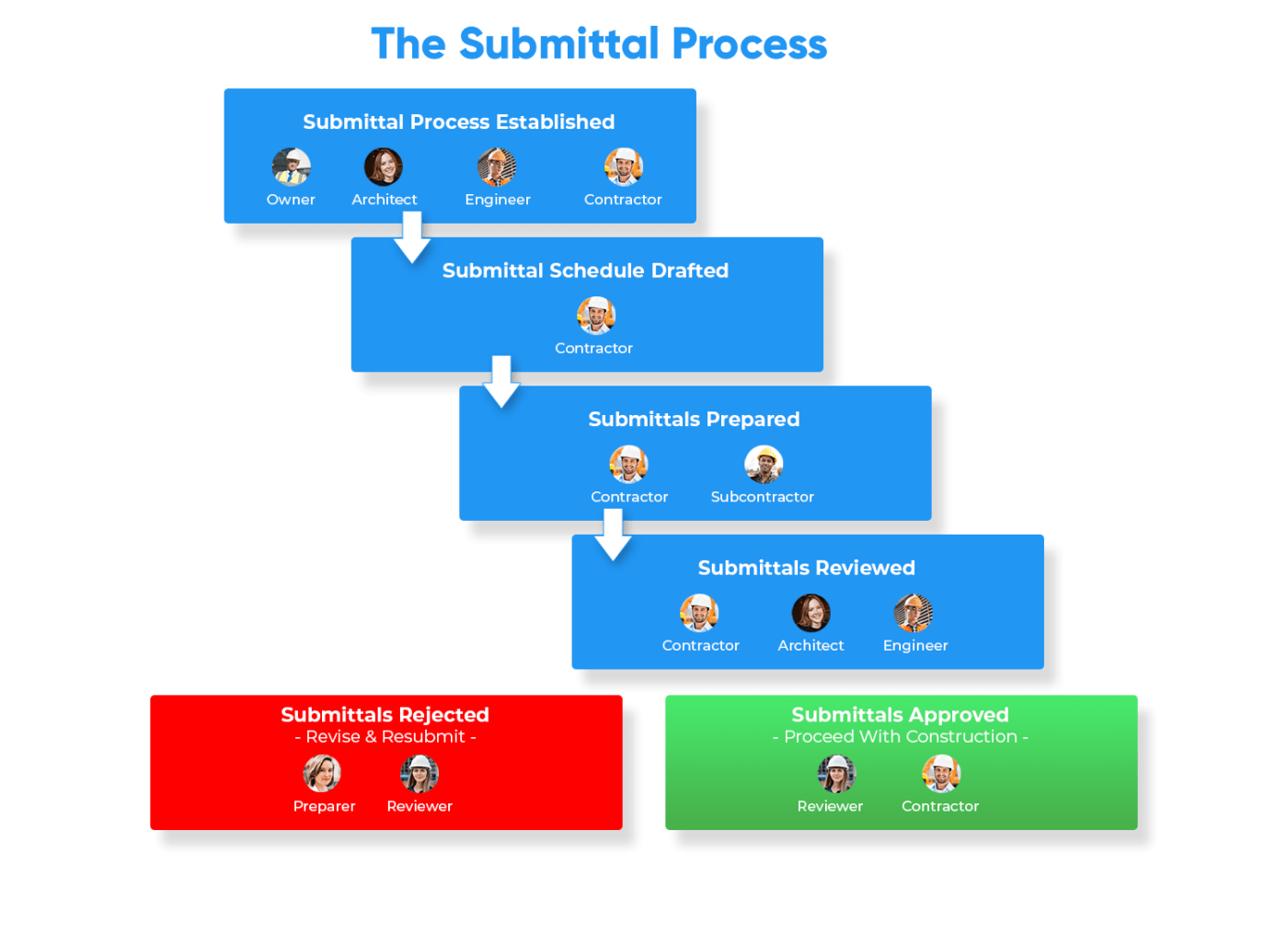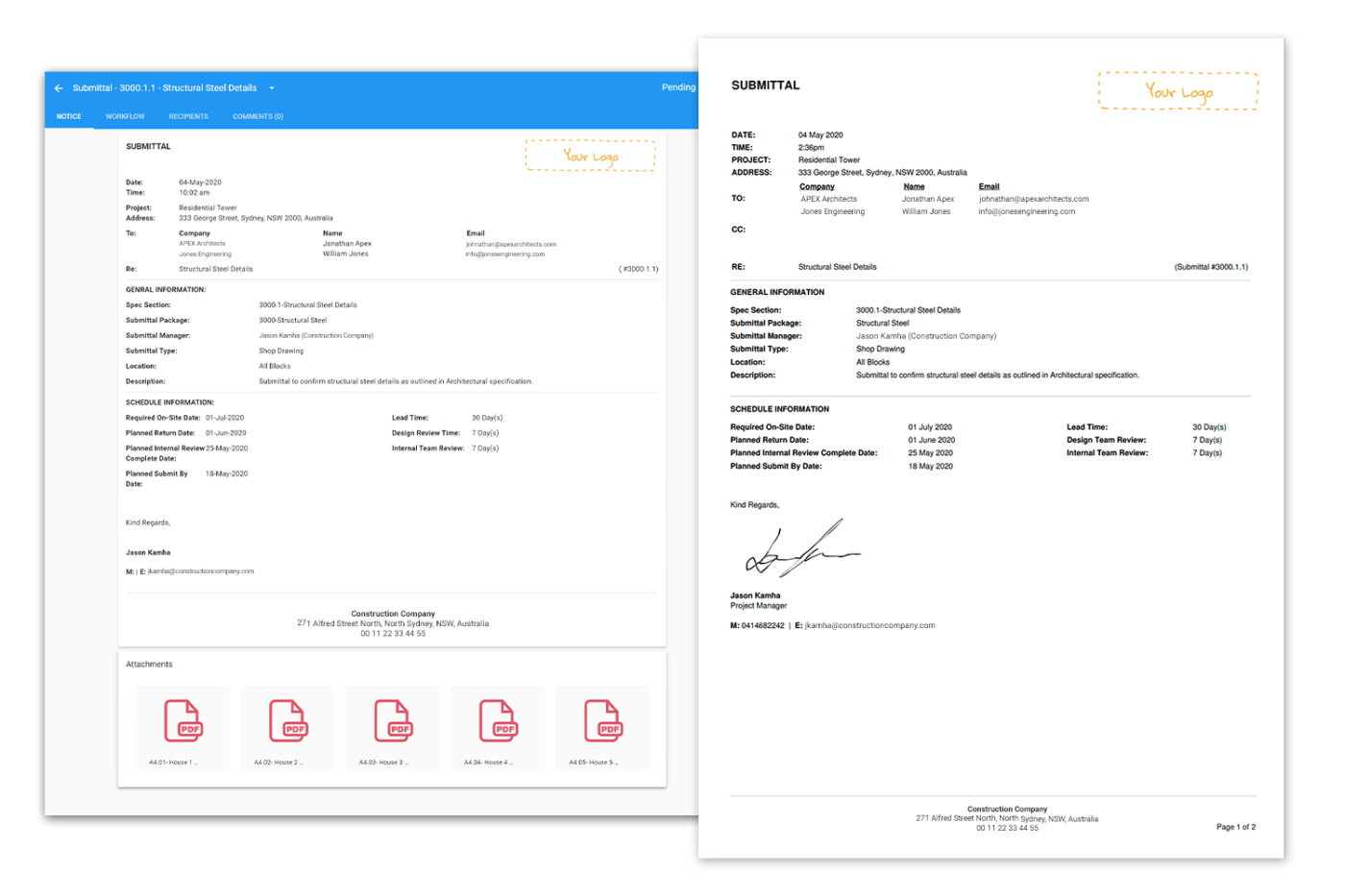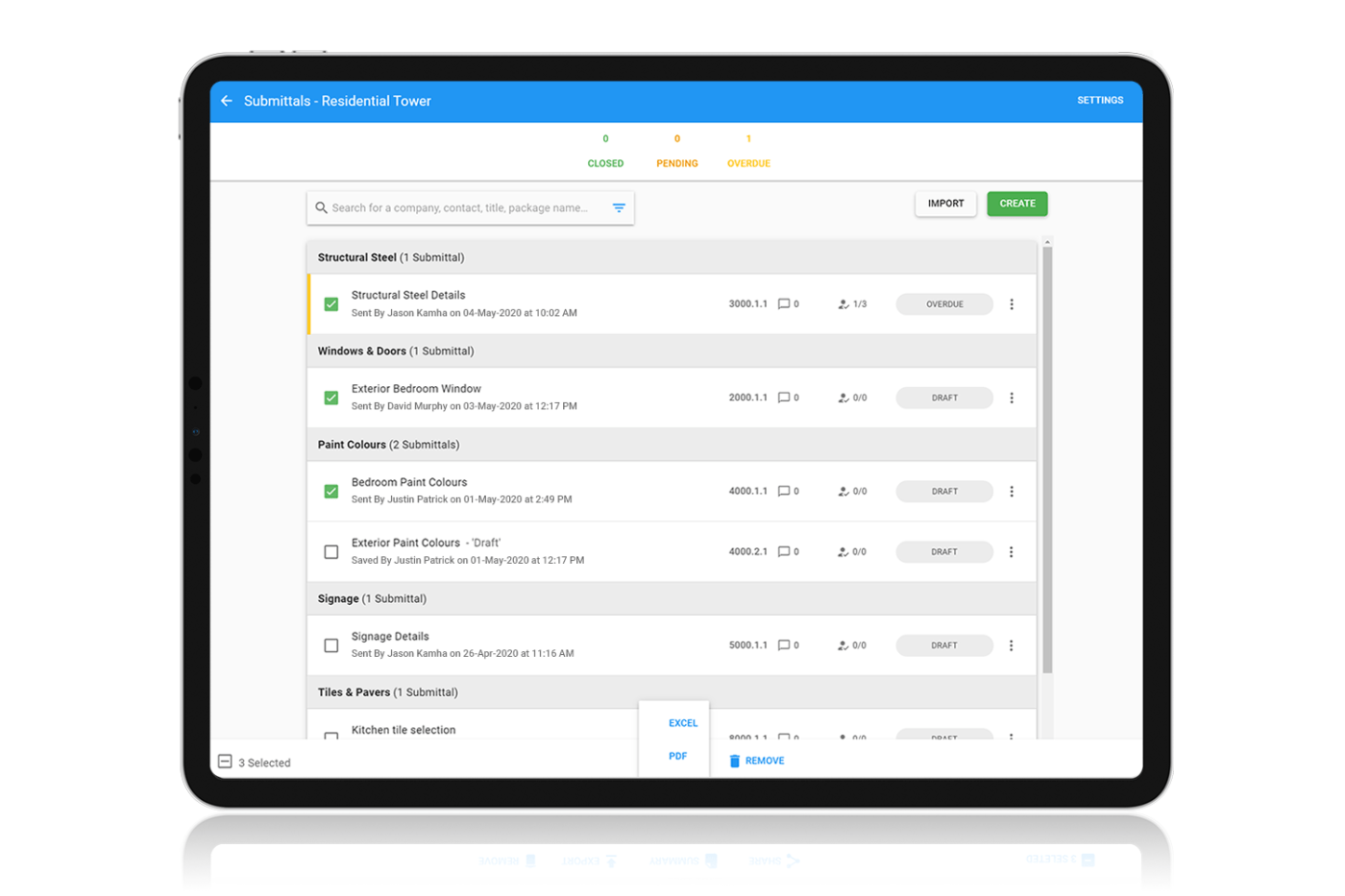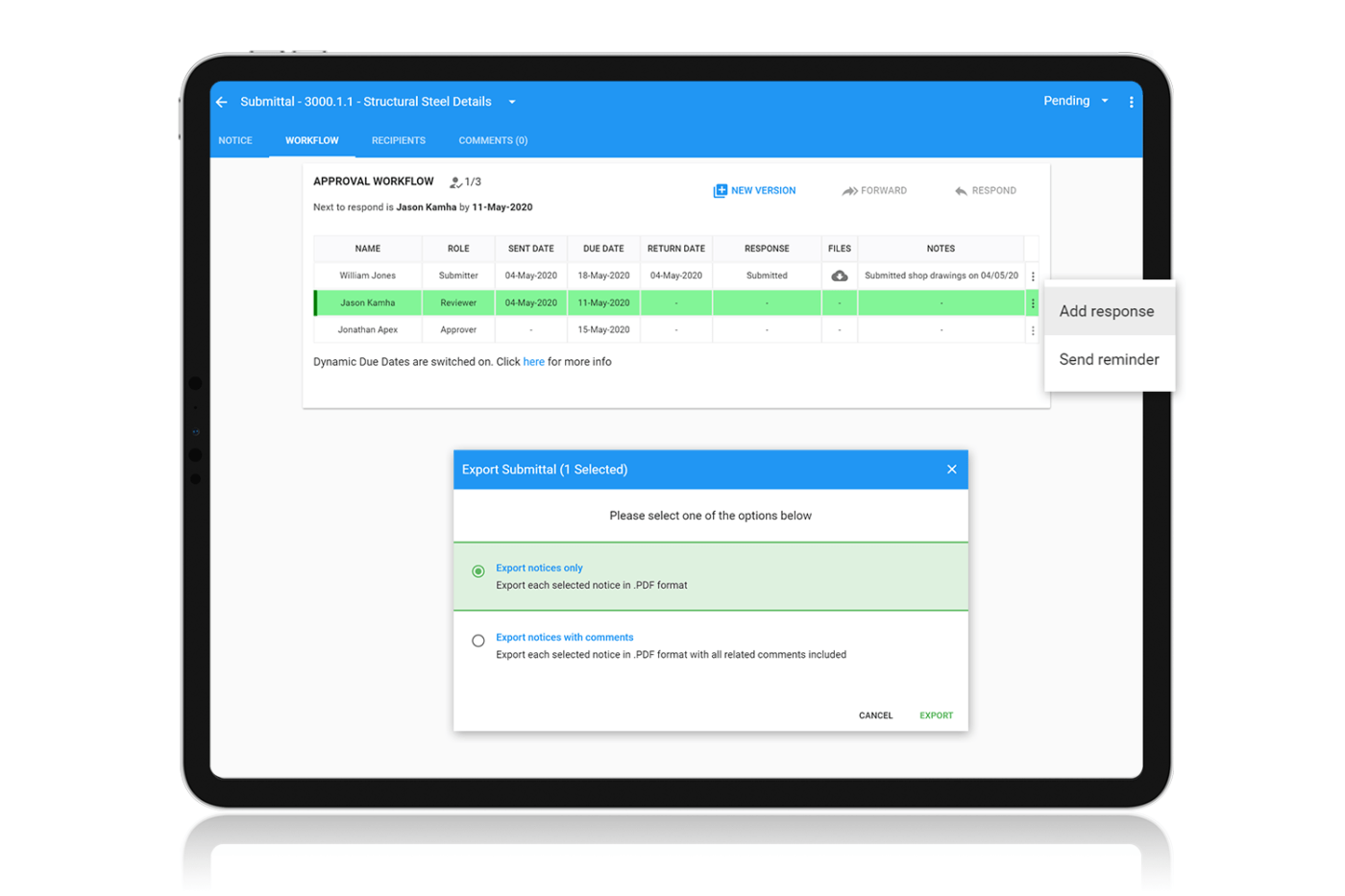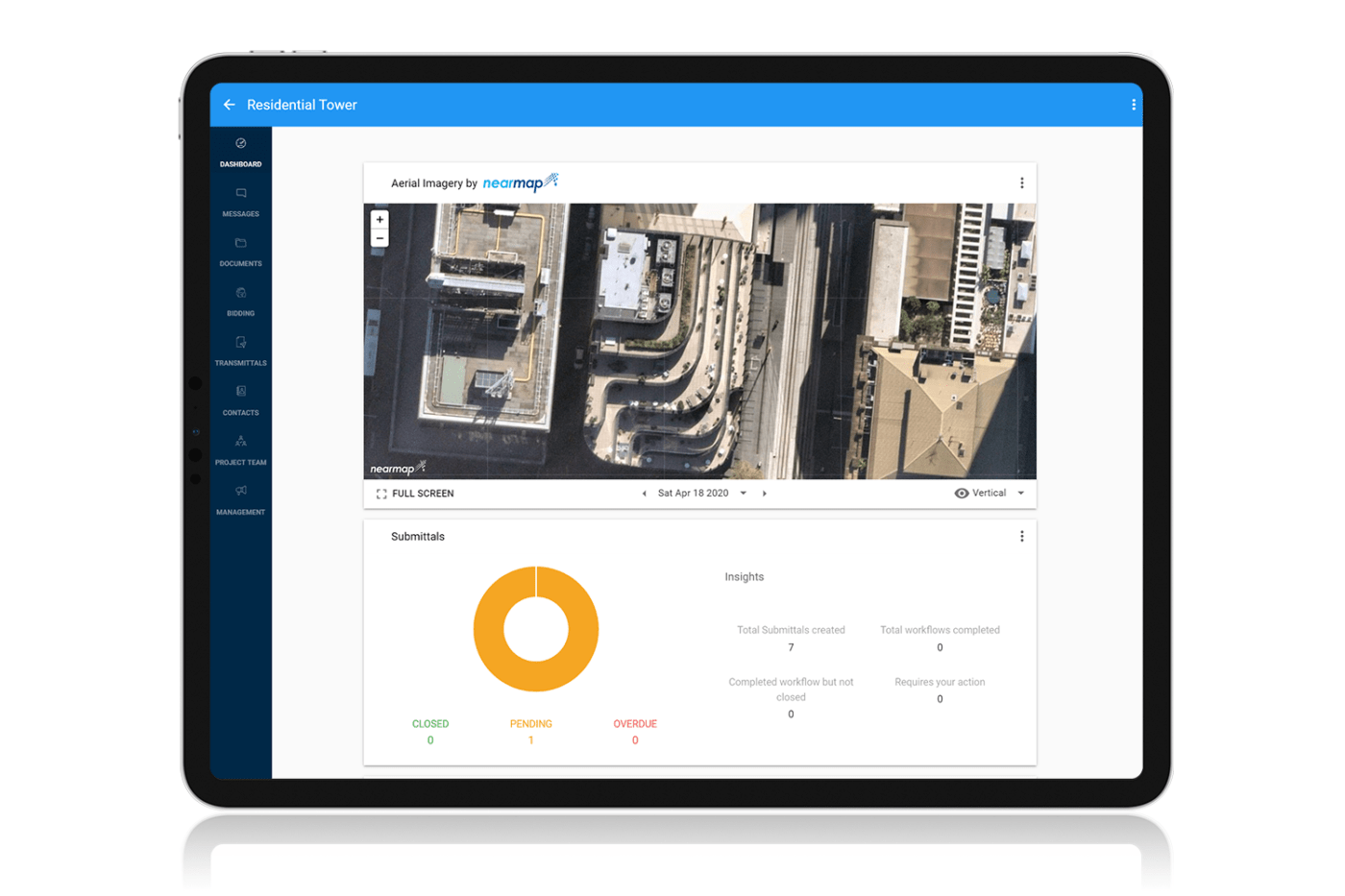What are construction submittals?
Construction submittals can consist of multiple elements. A submittal can include technical data, samples, shop drawings, production specifications and other written and physical information that will help the engineers, designers, and architects of a project to ensure the correct materials are used in new buildings. Other submittal components include product cut sheets that identify the manufacturer, specifications and model number, color and finish selections, color charts, and even finished product components.
What is the submittal process?
During the submittal phase of a construction project, contractors communicate information about the materials they intend to use. In order for the proposed project to go ahead, the engineers and architects must approve the materials for compliance with the owner’s contract. They must also approve the materials for appearance, safety and quality.
On large projects, the submittal process is usually formal and clearly defined. The contract and project specifications for big construction projects will require the contractor to hand over construction submittals to the engineer and architect for approval before proceeding. We can break construction project management down into four stages to make it easier to understand how submittals play a vital role from start to finish.
What does a submittal look like?
All submittals will be different depending on the project requirements. Essentially, the submittal document will include the description of the material, shop drawing, sample etc, the relation to the project specification, schedule and location. An approval workflow of responsible parties (Sub-Contractor, General Contractor, Architect, Engineer, Owner) can then be added and marked as either a Submitter, Reviewer, or Approver with due dates for each person’s response in-line with the project schedule.
Once a submittal is created, the Submitter, usually the Sub-Contractor, will submit the required documentation on or before their due date. It will then be passed on to the next in line who can then review the submitted documents and provide a response, for example, Approved or Revise and Re-submit. Once the entire workflow has reviewed and responded to, the submittal can be closed and the Sub-Contractor can then proceed with the approved requirements. The general steps involved are as follows:
Pre-construction meeting
In the pre-construction phase, stakeholders must meet to discuss the project and clarify the submittal process.
Construction schedule
In this phase, a schedule for the submittals must be defined in collaboration with the architects and engineers for the project, who will be in charge of analyzing and approving them.
Preparation of submittals
The subcontractors prepare their submittals with all required documentation as outlined at the pre-construction meeting. All agreed samples, drawings etc must be created or sourced.
Review phase
In the review phase, the architect’s team looks at the materials list and all supporting documentation to determine the effect of the material on the project. Once the submittal is approved or disapproved, the subcontractor will either need to resubmit new materials or can prepare to start work.
Why is the construction submittal process important?
Submittals are the main way that architects can verify that the right building materials are being used. Submittals offer a deeper level of detail than design documents alone and are also used as a final quality assurance check before materials arrive on site.
Does the quality of submittals matter?
Yes. The quality of the submittals matters hugely, and not only to cut construction risk. The more detailed the submittals, the more accurate the agreed-upon budget and schedule will be. If things go wrong at the planning stage, and the project overruns, the project is unlikely to be considered a success. Therefore, it’s extremely important that the submittals are as detailed as possible. As one construction project may require hundreds of individual submittals, it’s important that the initial submittal is not only accurate but submitted in an organized format and in-line with the project contract.
Tips to improve construction submittals
Streamline with software: Reduce manual errors and delays and improve the organization of the submittal process with automated workflows.
Ensure visibility: Make sure that everyone has access to the documents and information and that it is easily accessible and easy to find what’s required quickly.
Advanced tracking: Use software that incorporates advanced approval tracking and enables anyone to see what stage submittals are at and the subsequent steps that need to be taken.
How construction software can help
Electronic submittals can speed up the submittal process and the review process. Most companies today use cloud-based software. This type of software can make handling large document sets much easier and less confusing for everyone involved. Software also makes submittals more accessible and easily locatable. Notes and revisions are more organized and it is easier to see the date and time that comments were made.
Electronic tools can audit who has reviewed and approved submittals, notify team members when submittals are ready for review or late, and attach the submittal to the relevant part of the project plan.
Software is not just being used to digitalize document management and sharing. Technology has now enabled barcodes to be used on components so that they can be easily tracked and matched to plans. Building information modeling (BIM) now makes it possible to link materials to electronic drawings.
Need help with submittal management?
With our best-in-class tool, you can take control of project submittals and streamline the collaboration on any task that requires an approval process. WeBuild’s submittal tool provides teams with the power to manage workflow approvals for samples, certificates, shop drawings, warranties and any other contractual approval needed for your project.
You create approval workflows and manage submittal versions in addition to attaching plans, mark-ups, photos and more. You can also use WeBuild’s schedule tool within a new submittal to determine how much time you require for reviews before materials are delivered to site. Start your Free Trial today.


